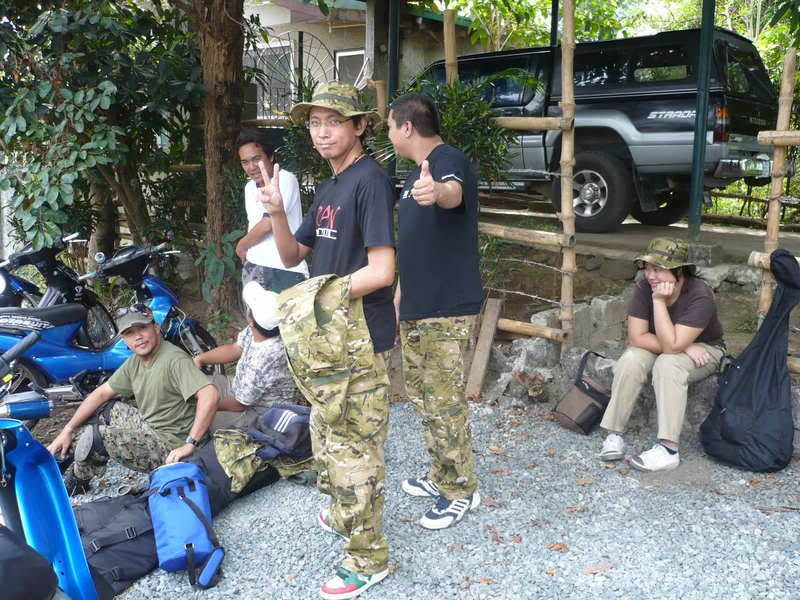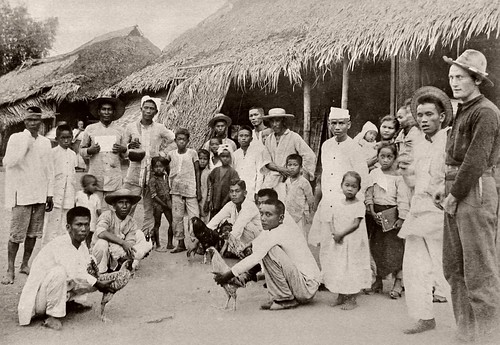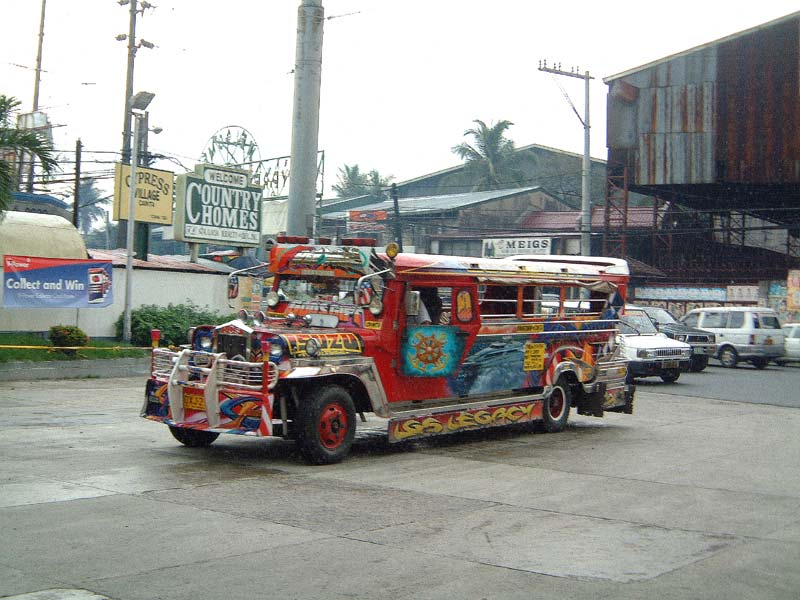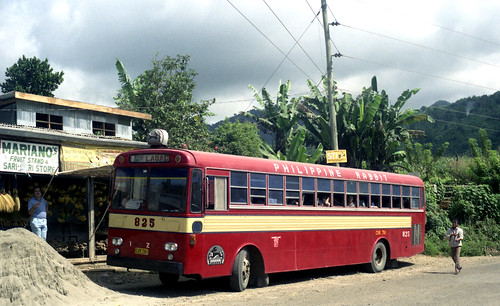Geography
The Philippine Islands are an archipelago of over 7,000 islands lying about 500 mi (805 km) off the southeast coast of Asia. The overall land area is comparable to that of Arizona. Only about 7% of the islands are larger than one square mile, and only one-third have names. The largest are Luzon in the north (40,420 sq mi; 104,687 sq km), Mindanao in the south (36,537 sq mi; 94,631 sq km), and Samar (5,124 sq mi; 13,271 sq km). The islands are of volcanic origin, with the larger ones crossed by mountain ranges. The highest peak is Mount Apo (9,690 ft; 2,954 m) on Mindanao.
Government
Republic.
History
The Philippines' aboriginal inhabitants arrived from the Asian mainland around 25,000 B.C. They were followed by waves of Indonesian and Malayan settlers from 3000 B.C. onward. By the 14th century A.D., extensive trade was being conducted with India, Indonesia, China, and Japan.
Ferdinand Magellan, the Portuguese navigator in the service of Spain, explored the Philippines in 1521. Twenty-one years later, a Spanish exploration party named the group of islands in honor of Prince Philip, who was later to become Philip II of Spain. Spain retained possession of the islands for the next 350 years.
The Philippines were ceded to the U.S. in 1899 by the Treaty of Paris after the Spanish-American War. Meanwhile, the Filipinos, led by Emilio Aguinaldo, had declared their independence. They initiated guerrilla warfare against U.S. troops that persisted until Aguinaldo's capture in 1901. By 1902, peace was established except among the Islamic Moros on the southern island of Mindanao.
The first U.S. civilian governor-general was William Howard Taft (1901–1904). The Jones Law (1916) established a Philippine legislature composed of an elective Senate and House of Representatives. The Tydings-McDuffie Act (1934) provided for a transitional period until 1946, at which time the Philippines would become completely independent. Under a constitution approved by the people of the Philippines in 1935, the Commonwealth of the Philippines came into being with Manuel Quezon y Molina as president.
On Dec. 8, 1941, the islands were invaded by Japanese troops. Following the fall of Gen. Douglas MacArthur's forces at Bataan and Corregidor, Quezon instituted a government-in-exile that he headed until his death in 1944. He was succeeded by Vice President Sergio Osmeña. U.S. forces under MacArthur reinvaded the Philippines in Oct. 1944 and, after the liberation of Manila in Feb. 1945, Osmeña reestablished the government.
An Independent Nation: Not without Corruption
The Philippines achieved full independence on July 4, 1946. Manuel A. Roxas y Acuña was elected its first president, succeeded by Elpidio Quirino (1948–1953), Ramón Magsaysay (1953–1957), Carlos P. García (1957–1961), Diosdado Macapagal (1961–1965), and Ferdinand E. Marcos (1965–1986).
Under Marcos, civil unrest broke out in opposition to the leader's despotic rule. Martial law was declared on Sept. 21, 1972, and Marcos proclaimed a new constitution that ensconced himself as president. Martial law was officially lifted on Jan. 17, 1981, but Marcos and his wife, Imelda, retained broad powers.
In an attempt to resecure American support, Marcos set presidential elections for Feb. 7, 1986. With the support of the Catholic Church, Corazon Aquino declared her candidacy. Marcos was declared the official winner, but independent observers reported widespread election fraud and vote rigging. Anti-Marcos protests exploded in Manila, Defense Minister Juan Enrile and Lt. Gen. Fidel Ramos defected to the opposition, and Marcos lost virtually all support; he was forced to flee into exile and entered the U.S. on Feb. 25, 1986.
The End of U.S. Presence and Rebel Fighting Continues
The Aquino government survived coup attempts by Marcos supporters and other right-wing elements, including one in November by Enrile. Legislative elections on May 11, 1987, gave pro-Aquino candidates a large majority. Negotiations on renewal of leases for U.S. military bases threatened to sour relations between the two countries. Volcanic eruptions from Mount Pinatubo, however, severely damaged Clark Air Base, and in July 1991, the U.S. decided to abandon it.
In elections in May 1992, Gen. Fidel Ramos, who had the support of the outgoing Aquino, won the presidency in a seven-way race. In Sept. 1992, the U.S. Navy turned over the Subic Bay naval base to the Philippines, ending its long-standing U.S. military presence.
Meanwhile, the separatist Moro National Liberation Front was fighting a protracted war for an Islamic homeland on Mindanao, the southernmost of the two main islands. The Philippine army also battled another rebel group, the Moro Islamic Liberation Front. In Aug. 2001, both rebel groups signed unity agreements with the Philippine government. Frequent and violent clashes with these and other terrorist groups have continued, however. Abu Sayyaf, a small group of guerrillas that has been fighting since the 1970s for an independent Islamic state and reportedly has links to Osama bin Laden, gained international notoriety throughout 2000 and 2001 with its spree of kidnappings and murders. Two leaders of Abu Sayyaf were killed in late 2006 and early 2007, dealing a serious blow to the group. The Philippine military has also battled the New People's Army, a group of Communist guerrillas that have targeted Philippine security forces since 1969. International officials reported in June 2003 that Jemaah Islamiyah, an affiliate of al-Qaeda, was training recruits in Mindanao, in the southern Philippines. About 120,000 people have died in the conflicts with rebel groups, and more than 3 million have been displaced.
Government Unrest and a Military Coup
In May 1998, 61-year-old former action-film star Joseph Estrada was elected president of the Philippines. Within two years, however, the Philippine Senate began proceedings to impeach Estrada on corruption charges. Massive street demonstrations and the loss of political support eventually forced Estrada from office. Vice President Gloria Macapagal Arroyo, daughter of former president Diosdado Macapagal, became president in Jan. 2001. In May 2004 presidential elections, President Arroyo narrowly defeated film star Fernando Poe.
Arroyo faced a political crisis in the summer of 2005, after admitting to calling an election official during 2004's presidential race. A taped phone conversation between Arroyo and the official seemed to suggest that she had tried to use her power to influence the outcome. She survived an impeachment motion in July.
A mudslide in Feb. 2006 leveled the town of Guinsaugon and killed about 1,800 of its 1,857 residents.
Arroyo declared a state of emergency in February, saying the government had foiled an attempted coup by the military. She also banned rallies commemorating the 20th anniversary of the ouster of Ferdinand Marcos. Some observers dismissed the report of the coup attempt as political maneuvering to gain support and weaken the opposition. On June 24, President Arroyo met with Pope Benedict XVI at the Vatican, where she announced that the Philippines was abolishing the death penalty.
In September 2007, former president Joseph Estrada was convicted of corruption and senteced to life in prison.
The government said in November 2007 that it had reached a deal with the separatist Moro National Liberation Front that set boundaries for a Muslim homeland on the southern island of on Mindanao. The deal seemed on the brink of fallling apart in August 2008 when fighting broke out between the rebels and government troops after the Supreme Court blocked the agreement. More than 160,000 Filipinos fled their homes and sought refuge from the violence.
A typhoon sunk a ferry in June 2008, killing 865 passengers and crew members. Another 500 people died during the storm.













 9:22 AM
9:22 AM
 crkota
crkota










 Posted in:
Posted in: 


0 comments:
Post a Comment